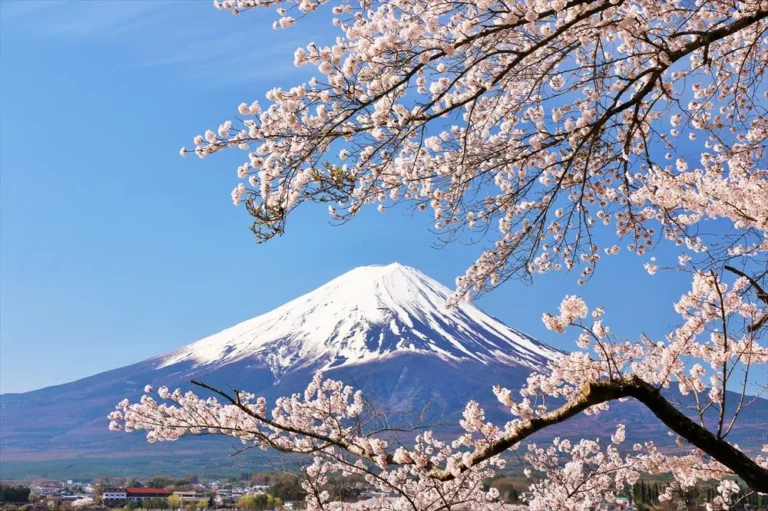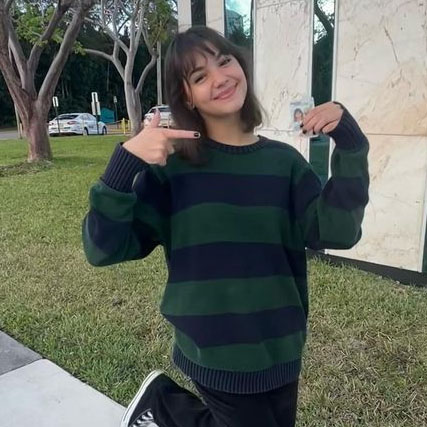Seeing Käämyäjä art was like entering a fairy tale full of stories about Finland’s past and nature’s beauty. The artwork’s peaceful colors and graceful lines made me even more appreciate Finland’s rich culture.
Käämyäjä is a unique and lovely art style from Finland. It uses curved lines and natural colors to tell stories about Finland’s history and culture in paintings, carvings, and fabric art.
Step into the magical of Käämyäjä, where art tells stories of Finland’s past and its beautiful landscapes.
What Is Käämyäjä? – See What It Is!
Käämyäjä is a fundamental part of traditional Finnish art, representing a rich blend of creativity. It includes various art forms like painting, carving, and textile work, all characterized by graceful lines and natural colors.
This art holds deep cultural meaning, often depicting themes from Finnish folklore, ancient traditions, and community identity.
Fundamentally, Käämyäjä mirrors Finland’s strong bond with nature, showcasing the peaceful beauty of forests, lakes, and rural scenes.
Each stroke and carving preserves stories and customs, ensuring they’re passed on to future generations. Through Käämyäjä, Finnish artistic spirit shines, connecting history, culture, and the timeless magic of creativity.
Understanding Käämyäjä: A Prelude to Innovation
Käämyäjä comprehension entails grasping its innovative essence. It’s a prelude to unraveling its intricacies, setting the stage for inventive breakthroughs and pioneering solutions in various domains.
Tracing the Roots: The Evolution of Käämyäjä
Delve into Käämyäjä’s lineage to discern its evolutionary journey. Trace its origins, observe its transformative phases, and understand how it evolved from a concept to a revolutionary phenomenon reshaping industries.
The Story Behind Käämyäjä
Uncover the narrative that defines Käämyäjä. Explore its inception, the visionaries behind it, and the challenges surmounted. Discover the anecdotes, triumphs, and setbacks that compose its compelling tale of innovation and impact.
How Käämyäjä Started Long Ago – Unlock Beginnings!

Käämyäjä has ancient beginnings that are deeply tied to Finnish traditions, back when art was a big part of community life and expression. It started with old rituals and beliefs, where art was used to tell stories, share values, and connect with nature.
In those days, Käämyäjä artists were respected for their talent in capturing Finnish folklore, myths, and nature in their art. Paintings, carvings, and textiles weren’t just pretty; they held special meanings, reflecting the Finnish community’s shared identity and history.
These ancient roots shaped how Käämyäjä art evolved, influencing its themes, techniques, and importance in Finnish culture, which we still see in today’s art scene.
Different Types Of Käämyäjä – Let’s Know About It!
1. Paintings:
Käämyäjä paintings vividly capture the essence of Finnish life, skillfully blending flowing lines and earthy hues. These artworks delve into the rich tapestry of Finnish culture, depicting folklore, serene landscapes, and everyday scenes infused with enchanting mythological elements,
2. Carvings:
Käämyäjä’s woodcarvings display detailed designs inspired by nature, animals, and ancient symbols, showing off the impressive skills and storytelling abilities of Finnish artists and craftspeople.
3. Textile Art:
Textile art in Käämyäjä tells stories with detailed patterns and embroidery, portraying themes such as forest animals, geometric designs, and historical events, enriching the artistic world with depth and texture.
4. Mixed Media:
Certain artists combine painting, carving, and textiles creatively, crafting hybrid artworks that fuse traditional Käämyäjä elements with modern techniques. These pieces offer new angles on Finnish artistic heritage, blending the old with the new in exciting ways.
5. Contemporary Interpretations:
Modern interpretations of Käämyäjä art are all about trying fresh ideas, using diverse materials and themes while staying true to its roots. This keeps the art form meaningful and exciting for the next generations.
How Käämyäjä Has Changed Over Time – Find Out More!

1. Innovative Techniques:
Over the years, Käämyäjä has embraced modern techniques, transitioning from traditional brushes and carving tools to contemporary digital methods. This shift has allowed artists to explore innovative ideas while preserving the essence of their art form.
2. Expanded Themes:
Initially centered on Finnish folklore, nature, and mythology, Käämyäjä has broadened its scope to include a wider range of topics such as social issues, environmental awareness, and personal reflections. This shift mirrors the evolving viewpoints of artists and society.
3. Cultural Fusion:
Global influences and cultural interactions have enhanced Käämyäjä. Artists now blend various elements from different cultures and art styles, creating a dynamic fusion that enriches Finnish art with diversity and depth.
4. Technological Advancements:
Advancements in technology have transformed Käämyäjä, giving artists more precise tools and processes. This has allowed for intricate details and complex artworks, pushing the limits of traditional techniques.
5. Educational Initiatives:
The continuous work to protect and share Käämyäjä has achieved impressive results. Educational programs, workshops, and exhibitions have become key pillars, inspiring a new wave of artists and fans dedicated to this beloved Finnish art style.
Saving Käämyäjä For The Future – Stay With Us!

1. Education and Outreach:
Educational efforts to introduce Käämyäjä to young people help them appreciate its cultural importance and artistic methods. Workshops, classes, and learning materials are vital for passing on the knowledge and skills of Käämyäjä to future generations.
2. Documentation and Archiving:
Creating comprehensive archives and digital repositories that document Käämyäjä artworks, techniques, historical contexts, and stories ensures that valuable information is preserved and accessible for future research, study, and inspiration.
3. Supporting Artists and Artisans:
Offering assistance, tools, and platforms to Käämyäjä creators encourages them to keep practicing and coming up with new ideas. Grants, fellowships, residencies, and chances to exhibit their work can empower artists to make fresh pieces and contribute to the ongoing energy of Käämyäjä art.
4. Cultural Institutions and Exhibitions:
Teaming up with museums, galleries, and cultural centers to display Käämyäjä art in exhibitions, collections, and public showcases not only raises awareness but also guarantees that these valuable artworks are carefully curated, protected, and shared with audiences globally.
5. Community Engagement and Participation:
Getting the local community involved in preserving Käämyäjä through events, festivals, and community projects nurtures a feeling of cultural pride, ownership, and responsibility. This active participation makes Käämyäjä a dynamic, ever-evolving tradition that connects with people from various backgrounds and ages.
FAQS:
1. Is Käämyäjä still practiced today?
Yes, Käämyäjä is still practiced by artists in Finland and is also gaining recognition internationally.
2. Can anyone learn Käämyäjä art?
While Käämyäjä requires skill and practice, anyone with a passion for art and storytelling can learn its techniques and create their pieces.
3. What themes are commonly found in Käämyäjä art?
Common themes in Käämyäjä art include nature, spirituality, Finnish mythology, and the connection between humans and the natural world.
4. Are there specific styles or variations of Käämyäjä?
Yes, there are various styles and regional variations of Käämyäjä, each with its own unique characteristics and storytelling motifs.
5. What is the origin of “käämyäjä”?
The origin of “käämyäjä” lies in Finnish folklore, where it was first conceptualized as a mystical entity. Its roots intertwine with ancient traditions and beliefs, embodying the essence of Finnish culture.
6. How has “käämyäjä” evolved over time?
“Käämyäjä” has evolved from a mere legend to a multifaceted concept. It has adapted to contemporary contexts, incorporating modern interpretations while retaining its essence as a symbol of tradition and innovation.
7. What types of “käämyäjä” exist?
Various forms of “käämyäjä” exist, ranging from traditional representations in folk art to contemporary adaptations in design and technology. These include figurines, artworks, digital manifestations, and more.
8. How do artisans craft “käämyäjä”?
Artisans craft “käämyäjä” with meticulous attention to detail, employing traditional techniques passed down through generations. They utilize materials such as wood, clay, and fabric, infusing each creation with cultural significance and craftsmanship.
9. What challenges does “käämyäjä” face in the modern world?
In the modern world, “käämyäjä” faces challenges such as commercialization, cultural appropriation, and diminishing interest in traditional folklore. Preserving its authenticity while adapting to contemporary tastes presents a delicate balance for its custodians.
10. Can Käämyäjä be found outside Finland?
While rooted in Finnish culture, “käämyäjä” has transcended geographical boundaries and can be found in various forms worldwide. Its allure has captivated audiences beyond Finland, contributing to its global presence.
11. What measures are being taken to preserve Käämyäjä?
Efforts to preserve “käämyäjä” include initiatives to document its cultural significance, promote awareness through educational programs, support artisans and traditional crafts, and foster appreciation for its heritage in both local and international contexts.
Conclusion:
Käämyäjä is a special kind of art from Finland. It uses curved lines and earthy colors to show Finland’s history and traditions in paintings, carvings, and fabric art. This art style keeps Finland’s culture alive for everyone to enjoy.
Read:





